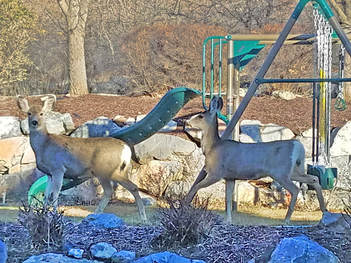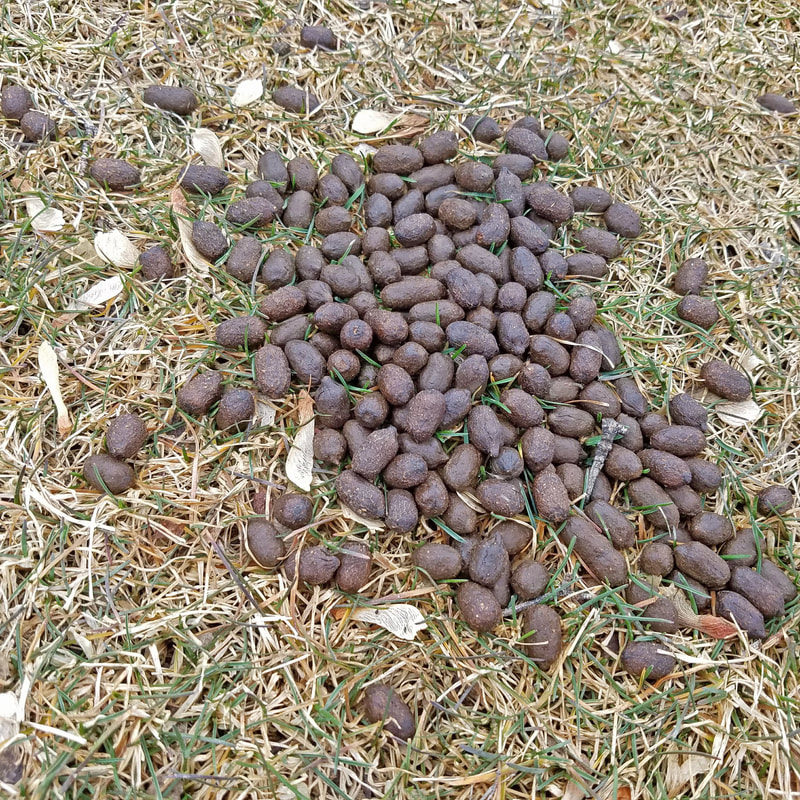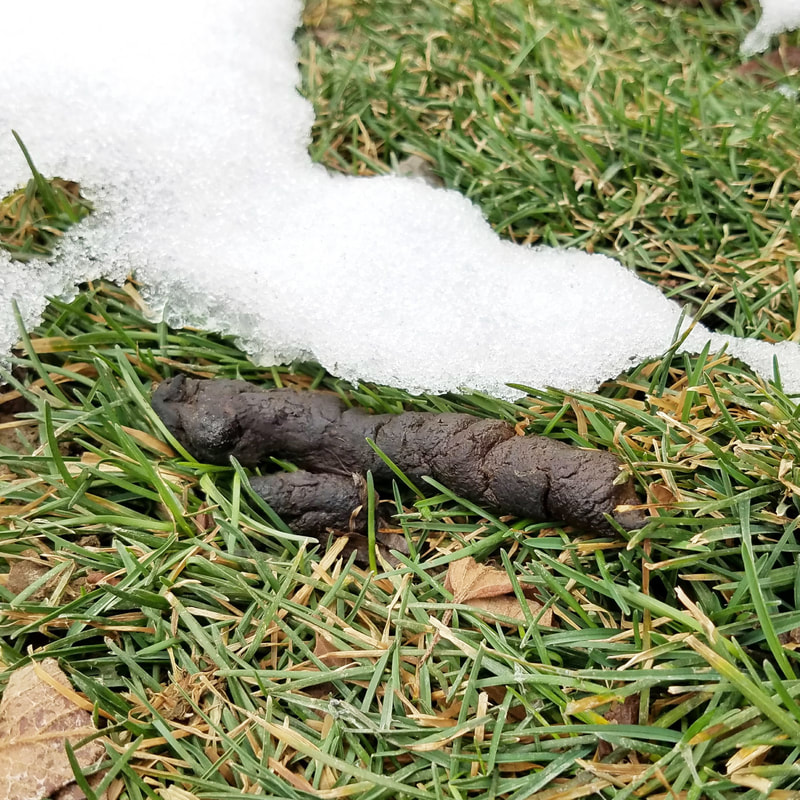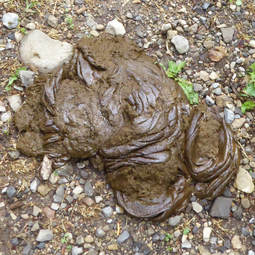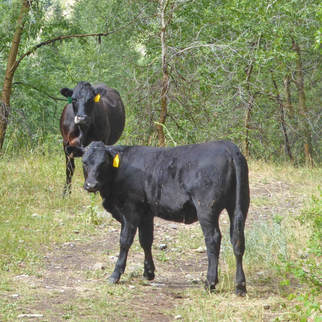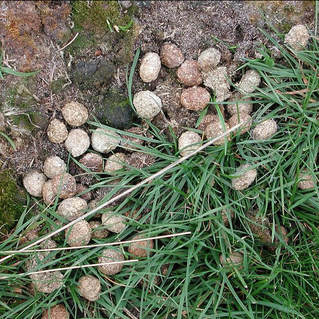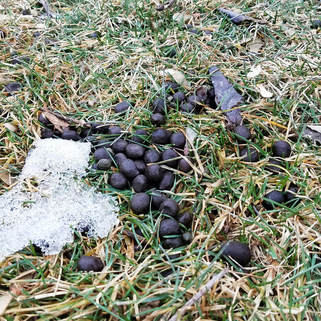Everything you want to know about Deer Scat!
|
Does your yard fill up with deer dung during the winter? All our little Bambi friends are coming down from the hills to snack on leftover delicacies in our gardens and yards. Quite often they do their grazing at night, and you only know they’ve been here because they leave their calling card—lots of deer scat! The tell-tales signs may be spread around your yard in piles that look like several cans of black beans were dumped in your grass. Have you ever asked yourself a few questions about deer scat? If so, here are your answers!
|
Why does deer poop come out in pellets rather than logs?
|
A deer’s colon creates dainty little pellets due to its colon working in an automatic rhythm, opening and closing the sphincter. It is this type of movement that results in the small pellet shapes, versus animals like dogs and humans where the sphincter stays open for a longer time, resulting in larger, longer droppings. Fortunately, if you step in a few deer pellets, they are dry and solid enough not to get stuck to your shoe unlike doggie doo does!
|
Why do cows have big, wet pies and deer have little dry piles?
|
Cattle and deer are both ruminants, animals with special 4-part stomachs to help them digest their food. They regurgitate their food and finely grind the plants so that bacteria can attack the cellulose and provide edible substances. Ruminants get their protein from their symbiotic bacteria. Although they are both ruminants their digestive systems also have differences. A cow’s stomach contains more potent flora, breaking down their feces into a sloppy, watery mess. Another by-product of these powerful microorganisms is the prodigious amount of methane gas a cow produces. Fortunately for deer, they do not produce a similarly copious amount of methane that would alert potential predators to their location!
|
|
Cows also drink much more water than deer, which comes out in their excrement. Cattle have no problem approaching water sources, having few natural predators. They have no need to preserve water in their bodies. Smaller ruminants have many predators and are especially vulnerable when they are drinking water. Preserving water when they poop helps keep them from drinking too often. A 200-pound deer might drink about a gallon a day, while a cow drinks 2-4 gallon for each 100 pounds of weight.
|
How often do deer poop?
Deer and cows both do their business about 13-14 times a day. An average deer pile contains 93 pellets! Counting them must be fun!
How can you tell the difference between deer and rabbit excrement?
|
First, it would take a lot of bunnies to fill up your yard with the same quantity as a few deer. Also, rabbit pellets tend to be a lighter brown feces, while deer pellets are dark brown or black. Rabbit pellets are rounder and have a rougher texture, while deer pellets are slightly elongated. Deer pellets have a distinctive tiny indent on one end and are slightly pinched off on the other. The outside of each pellet is smoother and shinier than a rabbit pellet.
|
Is deer poop good fertilizer?
Deer scat is rich in nitrogen, and while it might benefit your lawn, it is not recommended for vegetable gardens, unless it is first composted. The heat of the compost will kill any e-coli bacteria, which is dangerous to humans. However, some deer also have chronic wasting disease (CDW), caused by prions (a prion is neither bacteria, fungus nor virus, but the smallest infectious particle). A prion contains no genetic material but has been held responsible for a number of degenerative brain diseases, including mad cow disease. There are no known cases of chronic wasting disease being passed on to humans, but it is not recommended to eat deer that have tested positive for CWD. The prions that cause CWD are not killed by composting.
The straight poop!
In summary, step lightly as you venture back out into your yards this spring. You can rake the deer doo into the yard, or just mow over the top of it, and it will eventually disintegrate. You can find joy in knowing you made a small herd of deer happy in the cold winter months!
